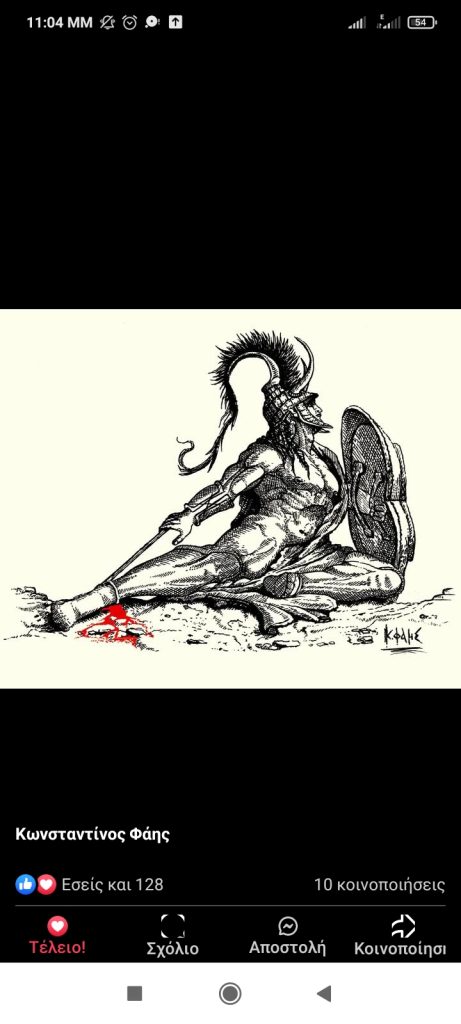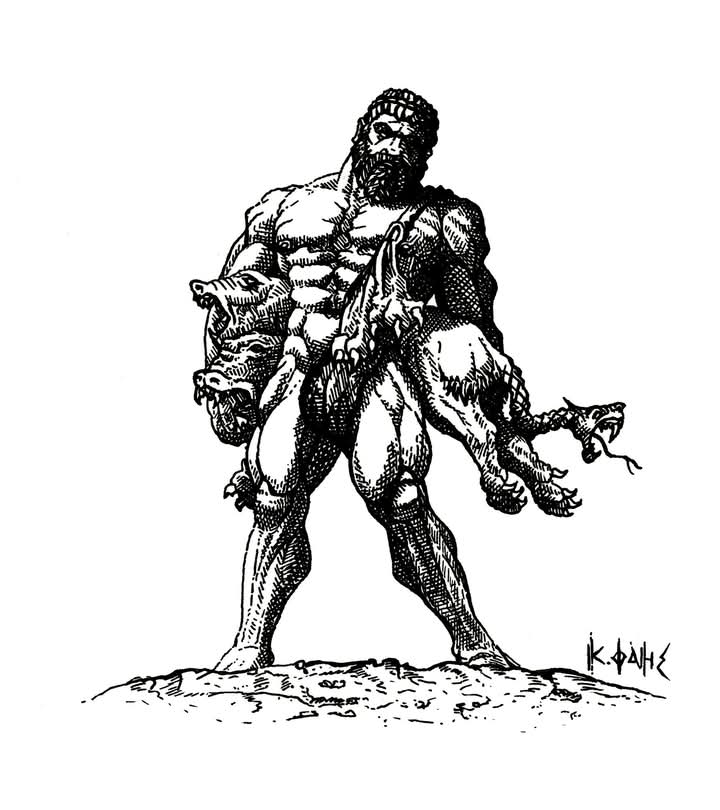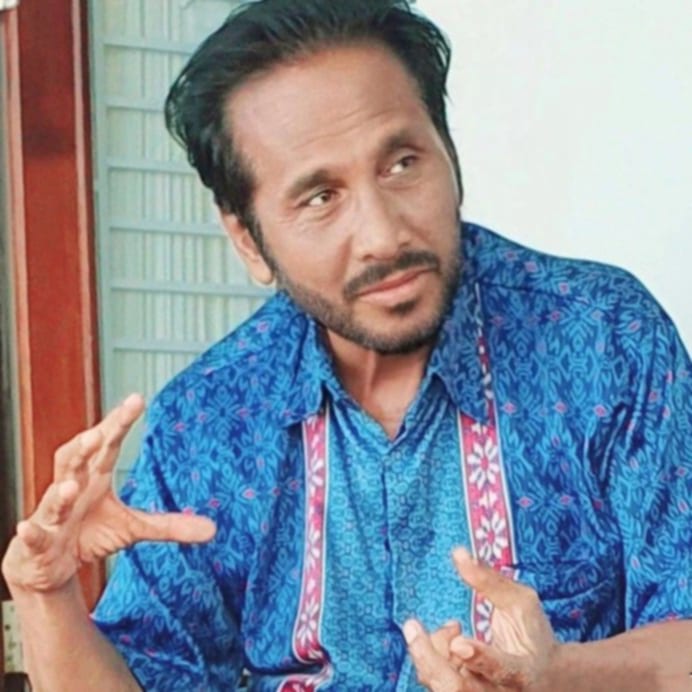Translation
Rizal Tanjung
In English And Indonesian language

From Achilles’ Heel to the Path of Herakles: Greece Then, Now, and the Living Myth
Greece was not born merely from marble stones and temple ruins. It grew from the verses sung by rhapsodes, from the rage of Achilles, and from the heavy footsteps of Herakles conquering both myth and history. If Homer once portrayed humankind as the shadows of gods, modern Greece now walks the reality as the living shadow of its past. The journey from myth to the present is a long process of preservation and reinvention of identity.
Achilles: The Body, the Rage, and Modernity

Achilles in the Iliad is not merely a character; he is a metaphor: a flawless body with a hidden vulnerability, a blazing fury that shapes history. In modern art—such as Ernst Gustav Herter’s statue now standing proudly in Corfu—Achilles is portrayed as a symbol of athletic beauty and tragic downfall. His naked body is not mere aesthetics; it is a cultural legacy of humanity pushing its own limits. Modern Greece is no stranger to this inheritance. Amid economic crises, mass migration, and European Union politics, the nation reveals that the “heel of Achilles” is not always a weakness, but a compass of history that demands to be acknowledged. They understand that beauty is never sterile, and that anger, like in the Iliad, can be a source of strength. In Greece’s contemporary politics and culture, the traces of Achilles remain: fragile yet ablaze.—
Herakles: Mythic Road and a New Nationalism

Herakles, the hero who conquered Troy before Troy itself became a legend, is a symbol of perseverance, intellectual strength, and divine will grounded in humanity. In myth, he is the human son of Zeus; in modern Greek history, Herakles becomes a symbol of national revival—one that faces forward while carrying the weight of the past.Today, the “Path of Herakles” is Greece’s road to European modernity without abandoning its roots. When Greece plants solar panels in former olive fields, when Athens builds ultra-modern museums beneath the shadow of the Acropolis, when the Greek diaspora in Australia and Canada stages Homeric theater with postmodern settings—then Herakles walks again. Not to conquer monsters, but to conquer the amnesia of history.
Comparison: From Epic to Economy
Aspect Ancient Myth Modern Greece
Central Figures Achilles & Herakles
The People and the State
Challenges War, Gods, Monsters
Economic crises, migration, identity
Symbolic Body Athletic ideal & ruin Nationalism, defiance of EU stereotypes
Core Discourse The will of the gods The will of the people, modern democracy
Struggle Against fate (moira) Against rootless globalization—Architecture, Identity, and Memory
Just as the statue of Achilles sheds the heavy Mycenaean armor for a more dramatic aesthetic, Greece today sheds the burden of history to present itself as a center of new cultural dialogue. It does not dwell in the past, but uses the past as a tool—diplomatic, economic, and artistic. As Pliny the Elder once recorded the beauty of the nude in Greek art, so too does modern Greece expose itself—naked in debt, in crisis, in struggle. Yet from that vulnerability emerges European solidarity, a rethinking of democracy, and a reinvention of Mediterranean identity.
The Path of Herakles Is Not Yet Finished
Myths never die. They merely change form. Achilles today is the youth of Greece protesting in the streets of Athens. Herakles is now the cultural architect rebuilding Greece with knowledge and innovation. From gods to parliamentary democracy, one thing remains: Greece continues to rewrite itself—with pen, with sculpture, and with the courage to defy fate. In the land of the gods now ruled by bureaucracy, the path of Herakles goes ever onward.

West Sumatra, 2025…………“Dari Tumit Achilles ke Jalan Herakles: Yunani Dulu, Kini, dan Mitos yang Hidup”Oleh: Rizal Tanjung Yunani tidak hanya lahir dari bebatuan marmer dan reruntuhan kuil. Ia tumbuh dari syair yang dinyanyikan para rhapsode, dari amarah seorang Achilles, dan dari langkah berat Herakles yang berjalan menaklukkan mitos dan sejarah. Bila dulu kisah Homeros menggambarkan manusia sebagai bayangan para dewa, kini Yunani modern menapak realitas sebagai bayangan masa lalu yang terus dihidupkan. Perjalanan dari mitos ke masa kini adalah proses panjang antara pelestarian dan penciptaan ulang identitas.
Achilles: Tubuh, Amarah, dan Modernitas
Achilles dalam Iliad bukan hanya tokoh, ia adalah metafora: tubuh sempurna dengan kelemahan tersembunyi, kemarahan yang membakar namun membentuk sejarah. Dalam seni modern, seperti patung karya Ernst Gustav Herter yang kini berdiri megah di Corfu, Achilles dihadirkan sebagai simbol keindahan atletik dan kehancuran tragis. Tubuh telanjangnya bukan sekadar estetika; itu adalah warisan budaya tentang manusia yang melampaui batas.Yunani kini tidak asing dengan warisan ini. Di tengah krisis ekonomi, migrasi besar-besaran, dan debat politik Uni Eropa, bangsa ini menunjukkan bahwa “tumit Achilles” tidak selalu kelemahan, tetapi juga penanda arah sejarah yang tak bisa diabaikan. Mereka sadar bahwa keindahan tidak pernah steril, dan bahwa kemarahan, seperti dalam Iliad, bisa menjadi sumber kekuatan. Dalam politik dan budaya Yunani kontemporer, tampak jejak Achilles: rapuh namun membara.
Herakles: Jalan Mitis dan Nasionalisme Baru
Herakles, sang pahlawan yang menaklukkan Troya sebelum Troya sendiri menjadi legenda, adalah simbol dari ketekunan, kekuatan intelektual, dan kehendak ilahi yang “membumi”. Dalam mitos, ia adalah anak Zeus yang manusiawi; dalam sejarah Yunani modern, Herakles menjadi simbol dari kebangkitan bangsa — yang menatap masa depan sambil memikul masa lalu.“Jalan Herakles” hari ini adalah jalan Yunani menuju modernitas Eropa tanpa meninggalkan akar.
Ketika Yunani menanam panel surya di bekas ladang zaitun, ketika Athena membangun museum ultra-modern di bawah bayang-bayang Akropolis, ketika diaspora Yunani di Australia dan Kanada memanggungkan teater Homeros dengan latar pasca-modern — maka Herakles berjalan lagi. Bukan menaklukkan monster, tapi menaklukkan amnesia sejarah.
Perbandingan: Dari Epos ke EkonomiAspek Mitos Kuno Yunani KiniFigur Sentral Achilles & Herakles Rakyat dan NegaraTantangan Perang, Dewa, Monster Krisis ekonomi, migrasi, identitas budaya
Simbol Tubuh Ideal atletis & kehancuran Nasionalisme, perlawanan terhadap stereotipe EropaWacana Utama Kehendak para dewa Kehendak rakyat, demokrasi modernPerjuangan Melawan takdir (moira) Melawan globalisasi tanpa akarArsitektur, Identitas, dan IngatanSebagaimana patung Achilles menolak zirah berat Mykenai demi estetika yang lebih dramatis, Yunani hari ini menanggalkan beban sejarah untuk menampilkan diri sebagai pusat dialog budaya baru. Mereka tidak hidup di masa lalu, tetapi menggunakan masa lalu sebagai senjata diplomatik, ekonomi, dan seni.
Sebagaimana Plinius Tua mencatat keindahan telanjang dalam seni Yunani, begitu pula Yunani modern membuka dirinya—telanjang dalam utang, dalam krisis, dalam perjuangan. Tapi dari sana pula muncul solidaritas Eropa, pemikiran ulang tentang demokrasi, dan penciptaan ulang identitas Mediterrania.Jalan Herakles Belum SelesaiMitos tidak pernah mati. Ia hanya berubah bentuk. Achilles kini adalah generasi muda Yunani yang memprotes di jalanan Athena. Herakles kini adalah arsitek budaya yang membangun kembali Yunani dengan pengetahuan dan inovasi. Dari dewa-dewa ke demokrasi parlementer, satu hal yang tetap: Yunani terus menulis ulang dirinya — dengan pena, patung, dan keberanian melawan takdir.Di negeri para dewa yang kini dikuasai birokrasi, Jalan Herakles terus berlanjut.Sumatera Barat, 2025…….
